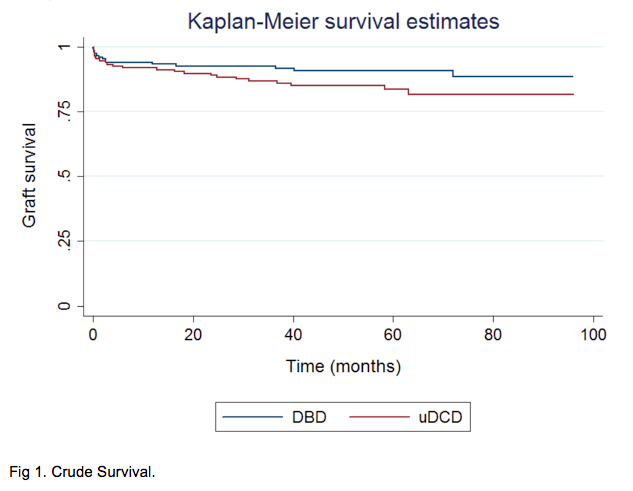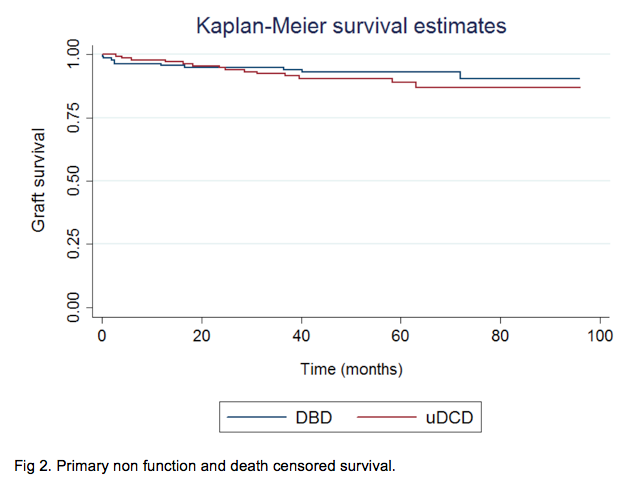Survival Analysis of Kidney Transplants with Grafts from Uncontrolled DCD Donors under Normothermic Preservation Prior to Organ Retrieval Related to DBD: Data from our 300 Transplants Series.
Felix Guerrero-Ramos1, Teresa Cavero-Escribano2, Alfredo Rodriguez-Antolin1, Federico de la Rosa-Kehrmann1, Manuel Pamplona-Casamayor1, Jose Manuel Duarte-Ojeda1, Angel Tejido-Sanchez1, Felipe Villacampa-Auba1, Jose Medina-Polo1, Amado Andres-Belmonte2, Juan Passas-Martinez1.
1Urology, Hospital Universitario 12 de Octubre, Madrid, Spain; 2Nephrology, Hospital Universitario 12 de Octubre, Madrid, Spain
Introduction & Objectives: Kidney transplantation is the best treatment for end-stage chronic kidney disease, with multiple advantages over dialysis. Because of the large quantity of people awaiting a kidney transplant there is an important organ shortage, which has led to investigate new sources of grafts. Donation after cardiac death (DCD) has emerged in the last two decades to increase the donor pool, classically composed by donation after brain death (DBD). Uncontrolled DCD is popular in not many countries, because of ethical issues among others; moreover, these kidneys have a higher ischemic risk due to longer cold ischemia time. In this series, we compare the survival of uncontrolled DCD transplants related to DBD transplants.
Methods: We carried out a retrospective review of 300 kidney transplants (150 uncontrolled DCD with normothermic perfusion and 150 DBD) performed in our centre between 2007 and 2012 on recipients under 60 years old. We collected preoperative features, surgical technique, graft characteristics (cold ischemia time...) and postoperative events. We estimated crude survival and death-censored and primary non function-censored survival with Kaplan Meier curves, using Stata v12.0 for Windows.
Results: Both groups were comparable regarding baseline characteristics, with a median follow-up of 53.6 months (interquartile range 35.3-70.5), and a median age of 43 years for donors and 46 for recipients. Crude survival (Figure 1) at 1, 5 and 10 years was 93.3%, 90.9% and 88.5% for DBD kidneys and 91.1%, 83.6% and 81.6% for uncontrolled DCD grafts, with no statistically significant difference (p=0,100). Primary non function and death censored survival (Figure 2) at 1, 5 and 10 years was 95.6%, 93% and 88.7% for DBD grafts and 97%, 88.9% and 86.9% for DCD grafts.


Conclusions: Uncontrolled DCD kidneys under normothermic preservation have similar survival as DBD grafts. Hence, they can be considered as a valuable source to increase the donor pool so as to minimize the current organ shortage.
